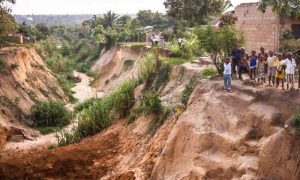
The erosion of large natural channels by flowing water—gully erosion—can wreak havoc on fields, roads, and buildings. In some cases, the sudden expansion of gullies even claims human lives. Geographers from KU Leuven, Belgium, are the first to show a worldwide link between heavy rainfall and the speed at which gullies expand. With predicted climate change, gullies may erode up to three times faster.
Researchers Matthias Vanmaercke and Jean Poesen from the Division of Geography and Tourism joined forces with an international team to collect and analyse measurements from 26 countries all over the world. Their study shows that rainfall has a much bigger impact on gully erosion than was previously assumed.
“We already knew that gullies can suddenly expand significantly during heavy rainfall”, says Matthias Vanmaercke. “In a tropical area, a gully can sometimes grow up to 100 metres in length due to one downpour. This may have serious consequences in populated areas. Our study is the first to provide exact numbers. The model that we developed shows that even relatively small changes in rainfall intensity can have major consequences for gully expansion.”
This process comes with challenges. “A widely accepted climate projection predicts that rainfall intensities will increase in most regions worldwide”, Vanmaercke continues. “Gully expansion rates could double in Western Europe and the US, where rainfall intensity is expected to go up by 10 to 15% by 2060. In regions such as Ethiopia, gully erosion rates may even triple. This would not only have a detrimental effect on agriculture and water quality, but could also entail problems such as muddy floods and the destruction of roads and other infrastructure.”
The good news is that gully erosion can often be stopped. This study is an important step in the right direction, as the proposed model and the data collected make it possible to better predict the expansion of gullies. As a result, more adequate measures can be taken in terms of soil and water conservation practices.
Reference:
Matthias Vanmaercke et al, How fast do gully headcuts retreat?, Earth-Science Reviews (2016). DOI: 10.1016/j.earscirev.2016.01.009
Note: The above post is reprinted from materials provided by KU Leuven.










